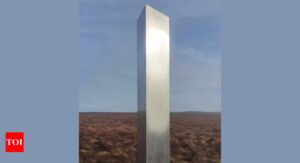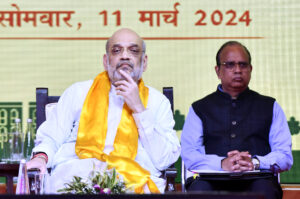China’s LAC satellite imagery doesn’t tell the full story
[ad_1]
China’s brazen and aggressive behaviour has been experienced firsthand by the Indian Army by the backstabbing tactics of the People’s Liberation Army (PLA) during the recent fight in eastern Ladakh’s Galwan Valley.
The Galwan episode must be seen in the larger context of Chinese propaganda machinery that has been hard at work for the last two months, claiming Indian transgressions along the Line of Actual Control, a tenuously agreed to dividing line between the two countries that has yet to be delineated along the ground or demarcated on a map.
The same claims have been used as an excuse to come forward and occupy disputed areas all along the LAC and even at places where no disputes exist.
CHINA’S CHERRY-PICKED SATELLITE IMAGERY
China has recently released satellite images of Galwan Mouth or Estuary as they prefer to call it. These images are undated but seem to be of recent provenance.

Also read | How China channelled Galwan river to claim territory
The imagery which can easily be identified as that of the general Galwan Valley area. The bridges visible in the imagery indicate that they were taken in the month of June 2020.
The images have gone viral over Chinese internet platforms, especially Weibo.

SATELLITE IMAGERY AS PROPAGANDA TOOL
China is using the recent satellite images as a propaganda tool to indicate Chinese satellite imagery capability and their monitoring frequency.
The images are obviously not of sub-metre resolution, thus indicating that Communist China has not yet achieved the high-resolution satellite imaging capability, although they probably must be very close to it.

EARTH OBSERVATION SATELLITES
So what is China’s earth observation capability? China has developed its earth observation efforts through various programs like:
- Gaofen series of satellites ensures high-resolution satellite imagery is collected globally
- Haiyang series of satellites collect data over the vast oceans
- Fengyun programme covers the meteorological requirements of the country
- Huanjing project deals with environmental and disaster monitoring
- Ziyuan and other resources satellites help countries like Brazil and African nations
SATELLITE REVISIT PERIOD
Although China has various satellite programmes in a very advanced stage, especially in communication satellites series Beidu, but as far as earth observation high-resolution satellites are concerned they aren’t really at cutting edge.
The dates of imagery indicate that the revisit period is five days which is a very common and routine capability of low earth orbit satellites used for military purposes since 1976, even by India.
India and the rest of the world awaits China to release restricted imagery of their UAVs to study the standards of their observations of this standoff.
(Col (Retired) Vinayak Bhat is a consultant for India Today. A satellite imagery analyst, he served in the Indian Army for over 33 years.)
ALSO READ | Exclusive: First images from Galwan show Chinese build-up intact after Ladakh carnage, India holding ground
ALSO READ | Violent India-China clash at LAC: What really happened that night
ALSO WATCH | Exclusive details of Ladakh face-off: Clubs wrapped in barbed wire, stones used to attack Indian soldiers
[ad_2]
Source link







